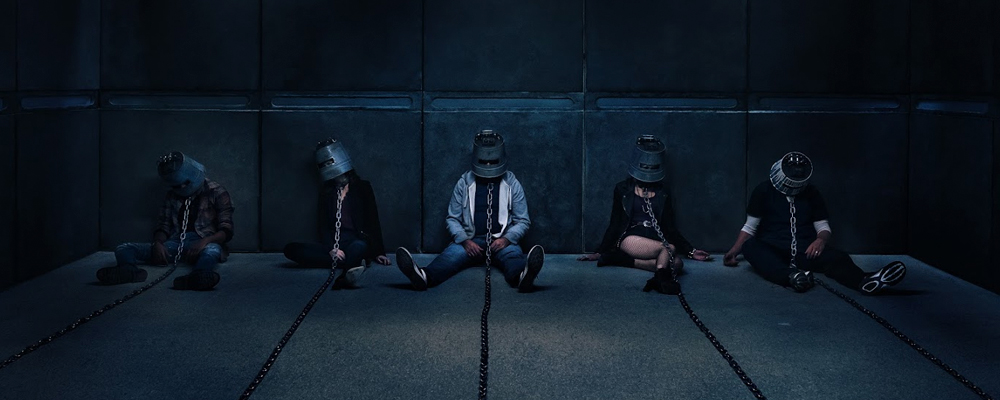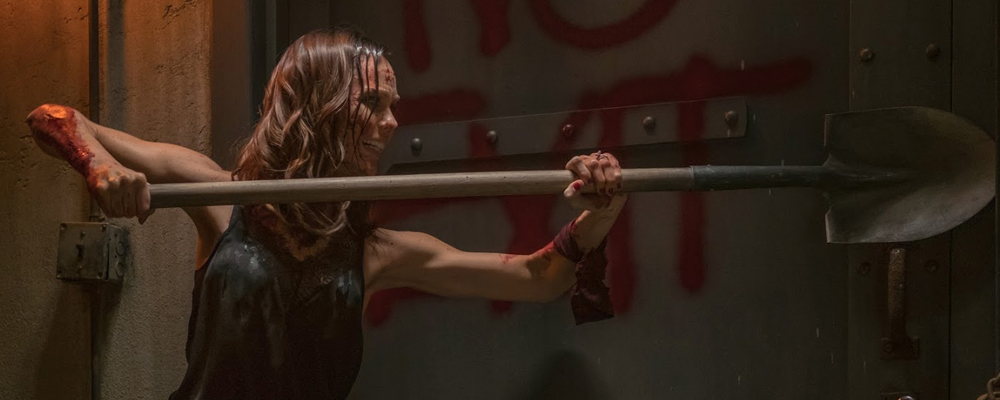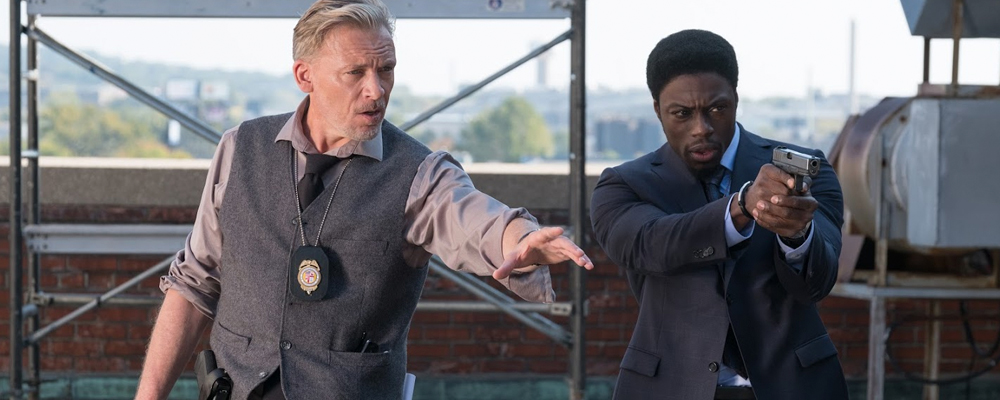‘Jigsaw’ Plays a New Game With Old Rules
Aaron Berke
The thinking behind Pete Goldfinger and Josh Stolberg’s script for “Jigsaw” must have been to find all the elements that made the first seven “Saw” films tick, reassemble them in virtually identical faction, and see if they can simultaneously push the franchise forward. Much like John Kramer’s games, the task is nearly impossible to win.
“Jigsaw” is set ten years after the death of John Kramer aka the Jigsaw killer (Tobin Bell). When murders crop up that match Jigsaw’s M.O., a new investigation begins, led by three detectives and a forensic scientist. It isn’t long before the investigators turn on one another (in typical “Saw” fashion), each suspecting the other of being the new Jigsaw killer.
Meanwhile, a new game has begun in a remote barn, where five victims are forced to endure the latest round of Jigsaw traps. Each of these shady individuals has something to confess, as Jigsaw implores them throughout the game. As bodies from the game are sent over to the detectives, they make a shocking discovery: blood samples on the victims belong to John Kramer himself. Can the Jigsaw killer truly be alive?
This question looms over “Jigsaw” and it’s the most interesting thing about the film. The answer, however, becomes transparent about midway through to anyone who’s ever watched a “Saw” movie. This is “Jigsaw’s” greatest gift and simultaneously its biggest curse. The film insists on adhering to the old “Saw” formula without embracing the great mythology that set the “Saw” films apart from every other horror franchise.
Goldfinger and Stolberg took over script duties on “Jigsaw,” picking up the pen from franchise veterans Patrick Melton and Marcus Dunstan. The writing duo penned the screenplays of Saw IV through VII, weaving a fascinating, labyrinthine plot through the films. This ever-expanding mythology ended in Saw 3D (VII) with the defeat of longtime Jigsaw apprentice Mark Hoffman (Costas Mandylor) at the hands of secret Jigsaw accomplice Dr. Lawrence Gordon (Cary Elwes). These events were the culmination of seven films that placed more importance on characters’ secret allegiances than the franchise’s many death traps. In “Jigsaw” the formula is reversed, to the detriment of the film.
Mark Hoffman and Lawrence Gordon are nowhere to be found in “Jigsaw.” Their stories have been apparently abandoned, and the new film refocuses on the original Jigsaw and a completely new set of characters who are, quite frankly, totally uninteresting. Again, sticking to the old “Saw” formula, the film cuts between two settings, the barn location where the game is being played, and the forensics lab where the detective’s stories play out. As the ‘whodunnit’ aspect of the movie kicks in, one can’t help but feel that the whole thing is really a perfunctory exercise in “how to make a Saw film.”
We don’t have enough invested in these new characters to care which one of them is the new Jigsaw accomplice. The only interesting character is Eleanor Bonneville, a forensics scientist who has an intriguingly perverse fascination with Jigsaw and owns a prized collection of his old traps. Actress Hannah Emily Anderson has an interesting resemblance to Amanda (played by Shawnee Smith), Jigsaw’s first apprentice in the original three films. It’s possible the resemblance was intentionally emphasized to create suspicion, but if so, it never really goes anywhere. Nor does Eleanor’s romance with Detective Logan Nelson (Matt Passmore) who has a hackneyed backstory about PTSD induced in Afghanistan and a wife who was murdered in suspicious circumstances. There’s an attempt to use the backstories to create connections between the new characters, but it feels too convoluted to be genuine.
This goes back to the main problem with “Jigsaw” which is that its focus is backwards. It tries to replicate old ideas with new characters, rather than honoring the series’ older characters and using them to push the story in new directions. If Cary Elwes’ Dr. Gordon had returned in some capacity, it would have immediately fueled the story with intrigue and enabled it to move forward naturally. Since old characters were not present, the filmmakers were forced to rely on old tropes as their only alternative.
Case in point, the structure of “Jigsaw” is highly reminiscent of “Saw V,” which featured five similarly deplorable people in sets of traps where each one had to confess their culpability in a crime; meanwhile, the cop story of “Saw V” played as an ongoing inquiry into which of the film’s detectives was the real Jigsaw apprentice. Sound familiar? The storyline in “Jigsaw” feels totally rehashed, along with the traps, which include many familiar ideas like whirring saws, lethal needles, and leg amputations.
On the bright side, the traps are not too gory, which became an increasing problem in the “Saw” franchise. The wisest move Lionsgate made with “Jigsaw” was bringing in “Predestination” directors Michael Spierig and Peter Spierig, who are less interested in the details of the traps and more interested in creating a strong mood. The trap sequences feature intricate camera work and unusual angles, creating many suspense-filled moments. The camera often wraps itself around the characters, suffocating them with its intrusiveness. This is particularly effective when watching the movie in 4DX cinemas, where the seat motion cleverly mimics the camera motion. This creates the sensation that we, as the audience, are complicit in trapping the poor victims.
While the acting overall is nothing to write home about, it would be a mistake not to give a special shout out to Tobin Bell, who steps back into the role of Jigsaw like a favorite old shoe. It’s always a thrill to watch Bell deliver his cold, disdainful lines and twisted speeches about morality. Bell is a wonderful scene-chewer, and “Jigsaw” gives him some of his best material in the franchise. While “Jigsaw” misses the mark in reconnecting with certain aspects of the mythology, it knows the resource it has in Tobin Bell, and utilizes him spectacularly.
Ultimately, “Jigsaw” is an incomplete puzzle. It retains core aspects of the franchise while de-emphasizing important elements of the mythology. It tries too hard to recreate the old “Saw” magic without pushing the franchise into new territory. If the “Saw” franchise is to continue past this point, it needs to embrace its full history while simultaneously letting go of the stale formula. That’s how you play Jigsaw’s game. To earn a win, you need to learn from your mistakes. Otherwise, it’s game over.
“Jigsaw” opens nationwide on Oct. 27.





